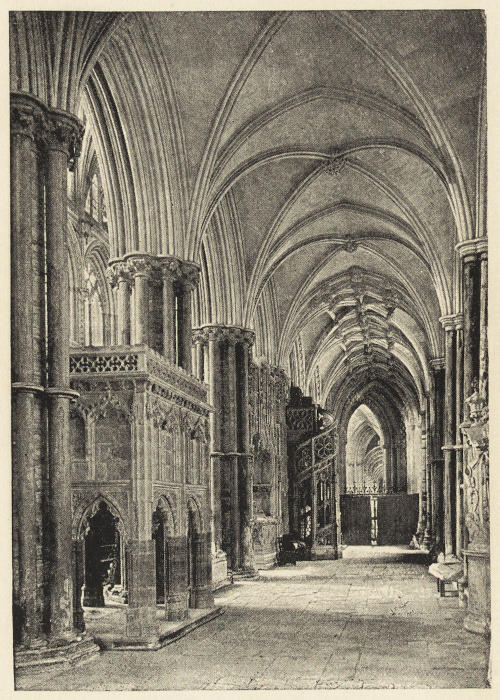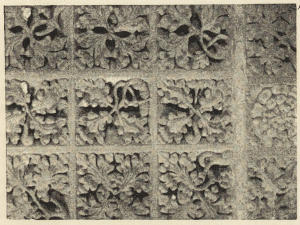E-text prepared by Sonya Schermann
and the Online Distributed Proofreading Team
()
from page images generously made available by
Internet Archive
(https://archive.org)
| Note: | Images of the original pages are available through Internet Archive. See https://archive.org/details/gri_33125014518423 |

ELY: NORTH AISLE OF CHOIR.
ENGLISH
CATHEDRALS
ILLUSTRATED
BY
FRANCIS BOND
M.A., F.G.S., Hon. A.R.I.B.A.
SECOND AND REVISED EDITION
ONE HUNDRED AND EIGHTY ILLUSTRATIONS FROM PHOTOGRAPHS
London
GEORGE NEWNES, LIMITED
SOUTHAMPTON STREET, STRAND
1900
PRINTED BY
HAZELL, WATSON, AND VINEY, LD.,
LONDON AND AYLESBURY.

SOUTHWELL CHOIR SCREEN.
The followingpages are anattempt to makethe study of theEnglish cathedralsmore interesting.Every ancientbuilding has a life-historyof its own,and should bestudied biographically.But open aguide-book, or visit the different portions of a cathedral(Winchester, for example,) in the regulation order, and whatyou read of or see will probably be, first, what was done in thenave in the latter part of the fourteenth and in the fifteenthcentury; then the work done in the crossing in the twelfthcentury; then work done in the transepts in the eleventhcentury; then the work in the choir in the first half of thefourteenth century; then the work done in the retro-choir earlyin the thirteenth century; finally, sixteenth-century work inthe Lady chapel. To the reader this hop, skip, and jumpmethod—if it deserves to be called a method—is simplymaddening. For the visitor it has one merit, and one meritonly: it saves his legs. I do not propose to save the visitor’slegs; I must candidly confess that the biographical method[vi]of studying a cathedral involves a certain amount of marchingand countermarching. But I venture to hope that thereare some visitors who willnot be deterred by a littleadditional bodily fatiguefrom studying the cathedralsaright. With what horror areader would study a biographyof the Great Dukewhich commenced with thePeninsular War, then describedhis school-days atEton, followed these up bythe battle of Waterloo, digressedinto a description ofhis